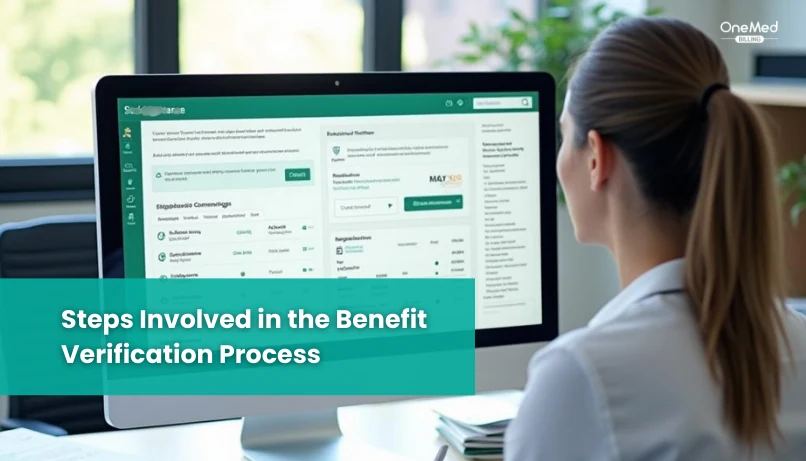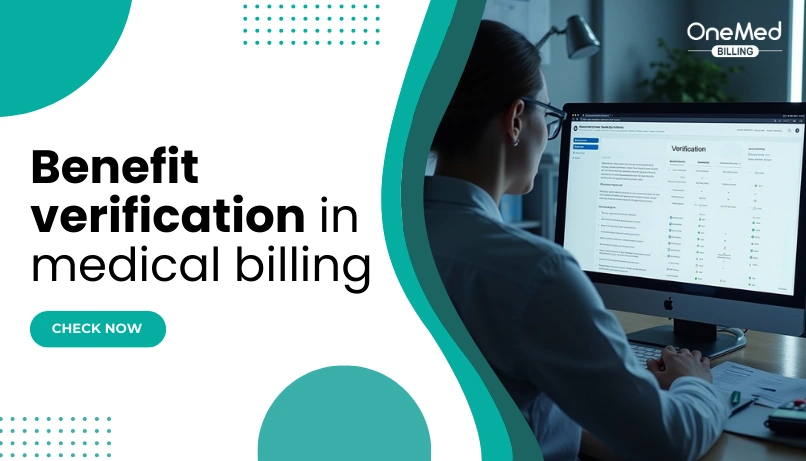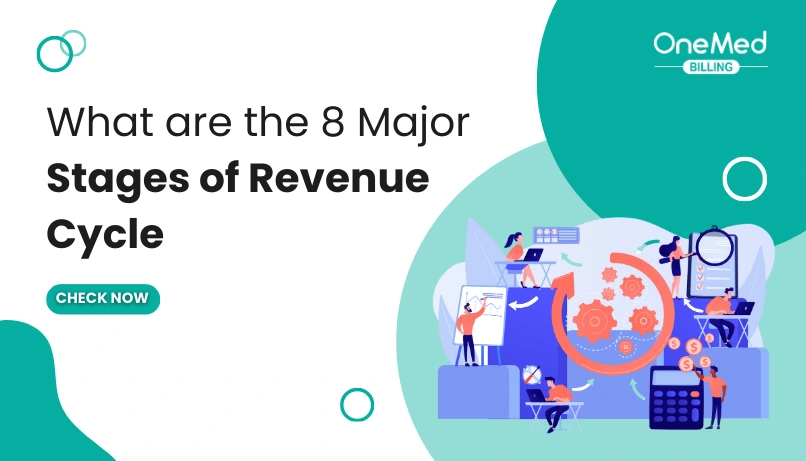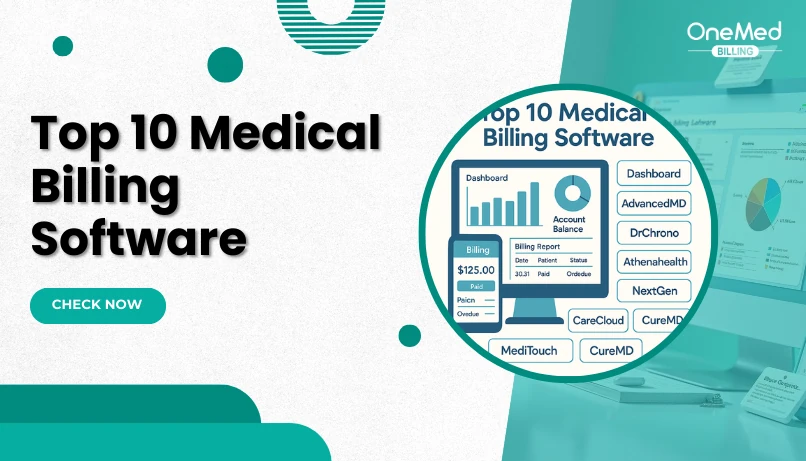Detailed Guide - What is Benefit Verification ?
- August 19, 2025
- 0 Comments
- Eligibility Verification
Before any claim gets submitted, there's one key step that often determines whether you'll get paid on time: verifying the patient’s insurance benefits. While it may seem routine, this process can directly impact claim approvals, patient satisfaction, and your overall cash flow.
In this blog, we’ll break down what benefit verification really means in medical billing and how it fits into the revenue cycle. We’ll walk through the step-by-step process of benefit verification, highlight common challenges, and share best practices that improve accuracy and speed. You’ll also learn how benefit checks differ from prior authorizations and when it might make sense to outsource verification tasks to a billing partner.
What Does Benefit Verification Mean in Medical Billing?
Benefit verification is the process of checking a patient’s insurance plan to find out what services are covered, what the insurance will pay, and what the patient may owe. It helps providers understand how much to charge and avoid claim issues later.
Steps Involved in the Benefit Verification Process

Collect Patient and Insurance Details
Start by gathering the patient’s insurance card, ID number, date of birth, and basic information about the visit or procedure.
Contact the Insurance Company
Use the payer’s portal or call their helpline to check the benefits. Some billing systems connect directly with payers for real-time checks.
Verify Coverage and Service Details
Confirm whether the service is covered, if prior authorization is needed, and what the deductible, co-pay, or co-insurance amounts are.
Note Any Limits or Restrictions
Ask about visit limits, exclusions, referral requirements, and whether the provider is in-network or out-of-network.
Document Everything Clearly
Record all verification details, including the name of the rep, date and time of the call, and any reference numbers for future proof.
Inform the Patient Before the Visit
Let the patient know what their insurance covers, what they may need to pay, and if any steps (like referrals) are still needed.
Why Insurance Benefit Verification Is Important
Benefit verification is important because it helps avoid surprise bills, claim denials, and payment delays. By checking a patient’s insurance benefits before providing care, you make sure the service is covered and understand what the patient will owe.
This step protects both the provider and the patient. Providers know they’ll be paid correctly, and patients get clear info about their out-of-pocket costs. It also helps billing teams avoid wasted time fixing rejected claims or chasing unpaid balances.
Challenges in Performing Medical Insurance Verification

Insurance benefit verification is critical, but it’s not always easy. Here are some common challenges providers face during this process:
1. Incomplete or Inaccurate Patient Information
If the patient’s insurance ID, name, or date of birth is entered incorrectly, it can lead to incorrect verification results. Even small mistakes can cause delays or denials.
2. Long Wait Times with Insurance Companies
Verifying benefits often means calling insurance companies or using their online portals. Some insurers have slow systems or limited support, which delays responses.
3. Frequent Policy Changes
Patients switch plans, change employers, or update coverage. Without real-time updates, it's hard to keep up, and using outdated info can lead to claim problems.
4. Complex Coverage Rules
Each insurance plan has its own rules about what’s covered, pre-authorizations, and co-pays. Understanding these differences for every patient is time-consuming.
5. Limited Staff and Resources
Busy practices may not have dedicated billing staff. When front desk teams juggle multiple duties, benefit checks may be rushed or skipped.
6. Lack of Automation Tools
Practices that rely on manual processes instead of using automated systems or clearinghouses are more likely to miss key details or delay verification.
Best Practices for Efficient Benefit Verification
Verifying Benefits for Every New and Returning Patient
Always check benefits before each visit, even for returning patients. Insurance coverage can change at any time. Verifying each time ensures services are covered and avoids surprise denials or unexpected bills for the patient.
Using Benefit Verification Software Tools
Leverage tools or clearinghouse portals that automate the verification process. These systems can quickly pull up real-time coverage info, co-pays, deductibles, and authorization needs, saving time and reducing manual errors.
Keeping Documentation and Reference Numbers
Always document verification results, including the date, representative name (if verified by phone), and reference numbers. This proof can help during claim disputes or audits and gives your team a clear paper trail.
Training Staff on Verification Protocols
Ensure front desk and billing staff are trained on how to properly verify insurance. They should know what to check, how to spot red flags, and when to escalate issues. Well-trained staff helps reduce billing errors and improve collections.
Difference between Prior Authorization and Benefit Verification
1. Benefit Verification
Definition: Benefit verification is the process of checking a patient’s insurance coverage before providing a service.
What it includes:
- Is the patient’s insurance active?
- What services are covered?
- What’s the patient’s responsibility? (co-pay, deductible, coinsurance)
- Are there any coverage limits or exclusions?
- Is the provider in-network?
Purpose:
To understand how much the insurance will pay and what the patient might owe out-of-pocket.
2. Prior Authorization
Definition:
Prior authorization (also called pre-authorization or pre-certification) is the approval required from the insurance company before certain procedures, medications, or services can be performed.
What it includes:
- Sending medical records or supporting documents
- Proving medical necessity
- Waiting for insurer approval (can take days)
Purpose:
To confirm the insurance will cover a specific service before it’s performed. Without it, payment may be denied even if the service is covered.
When to Consider Outsourcing Eligibility Verification Services

If your front desk is overwhelmed, or you're spending too much time chasing insurance details, it might be time to bring in help. Many practices turn to medical billing companies that offer eligibility verification services to make sure coverage checks are done right, without slowing down daily operations. This gives your in-house team more time to focus on patient care, not paperwork.
Pros of Outsourcing Benefit Verification Checks
Outsourcing insurance verification has many advantages:
- Faster turnaround on verifications
- Reduced errors in coverage checks
- Access to experienced billing staff who understand payer rules
- Better claim acceptance rates
- Cost savings compared to hiring and training in-house staff
It also helps reduce staff burnout by shifting repetitive, time-consuming work to specialists.
Integration Between Billing Partners and Front Office
Smooth collaboration is key. A good billing company will work closely with your front desk to share updates in real time. Whether it’s through shared systems, secure messaging, or daily reports, both sides should stay aligned so nothing falls through the cracks. This ensures patient eligibility is verified before appointments, improving the billing flow and reducing delays.
Conclusion
Insurance benefit verification is one of the most important parts of medical billing. It helps you know what’s covered, what the patient owes, and what documents are needed. When done correctly, it can prevent delays, rejections, and confusion for both your team and your patients. By following the right steps, using good tools, and training your staff or even outsourcing to a trusted billing company, you can keep your billing process smooth and stress-free.
FAQ
What is benefit verification in healthcare?
Benefit verification is the process of checking a patient’s insurance plan to confirm what services are covered, what the insurer will pay, and what the patient may owe.
What information is necessary for benefit verification?
You need the patient’s insurance ID, date of birth, provider details, planned service or procedure, and any referral or authorization requirements.
Why is it important to verify a patient's eligibility for benefits?
Verifying benefits helps prevent claim denials, reduces billing errors, and ensures patients understand their out-of-pocket costs before treatment.
What is the purpose of a benefit verification letter?
A benefit verification letter confirms the insurance details, including coverage, co-pays, deductibles, and any limits, giving written proof of the verification.






Comments (0)